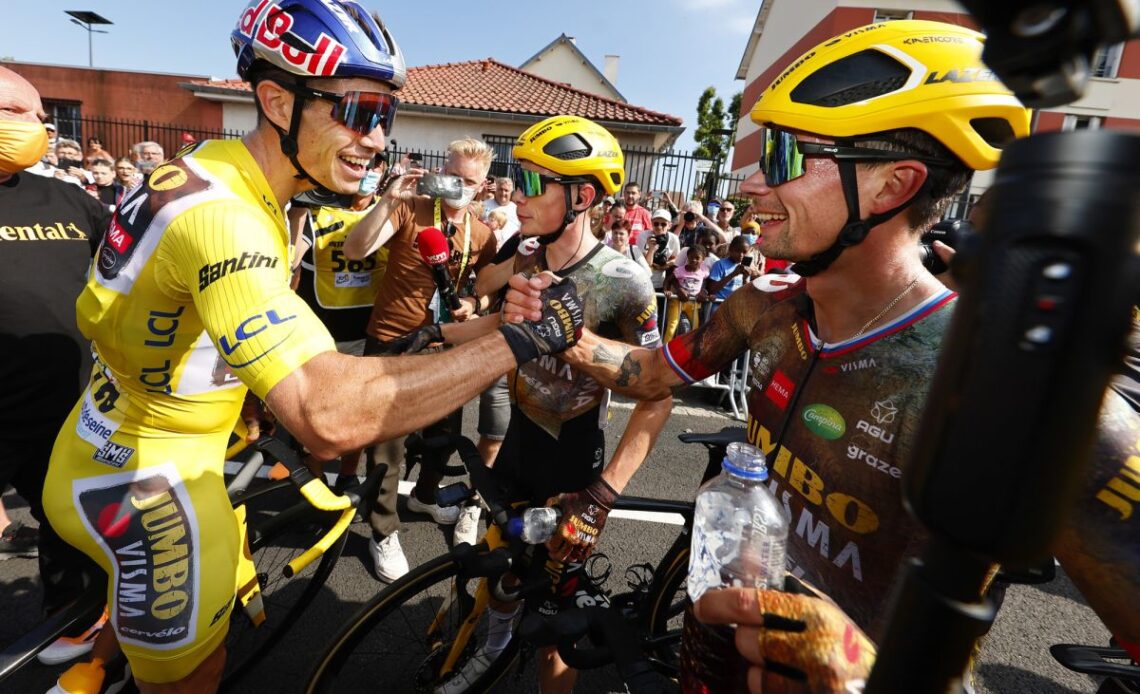Team Jumbo-Visma confirmed on Tuesday that it will avoid using the tubular Shimano wheels that collapsed, in separate incidents, beneath Christophe Laporte and Wout van Aert at Paris-Roubaix this spring.
Instead, the team will switch to the newer Shimano Dura-Ace wheels, while also switching from tubular to tubeless.
With stage 5 of this year’s Tour de France traversing 17km of Roubaix cobbles, equipment choice could be a key factor in a team’s success. On a day where the Tour won’t be won but could very certainly be lost, avoiding significant time losses will be the primary aim for the GC favourites, and among those are Primož Roglič and Jonas Vingegaard.
Monday was described by some as a ‘free rest day’ in the north of France following the long transfer from Denmark, so the team took the opportunity to have one final recce of the cobbles and dial in their equipment.
“We chose to return to the cobbles, when our riders have already recognised this stage twice each, this winter and in March, because we wanted to do a fairly intense session and above all test the bikes once again,” Jumbo-Visma’s performance director Mathieu Heijboer told L’Equipe.
Heijboer also revealed that the team will switch from the Cervélo S5 aero bikes to the more compliant Cervélo Caledonia, an all-road bike designed to handle light gravel, making it suited to the rougher cobbled terrain.
“They will all use the special Paris-Roubaix bikes, which are much less rigid than the ones they usually use. The frame really absorbs the vibrations of the cobbles and, even if it will only last about twenty kilometres, these are the most important kilometres of the stage. For a bunch sprint, sure, they’re not the best bikes but guys will tire a lot less with them.”
The primary stated benefit of tubular wheels and tyres is the ability to continue riding after a puncture. Of course, the rolling resistance increases and the cornering traction is reduced, but given the tyre is glued to the rim, it won’t remove itself.
It’s therefore deemed safe to ride on until the team car can get close enough to provide a quick wheel change, rather than forcing the rider to stand stranded at the roadside and wait.
The two incidents at Paris-Roubaix occurred after Laporte and Van Aert attempted to take advantage of this fact and continue riding over the cobbled terrain. However, given punctured tyres don’t offer any cushioning, each and every cobble directly impacted the carbon fibre rim. Eventually, the…
Click Here to Read the Full Original Article at CyclingNews RSS Feed…

